Lamarck, quietly tucked away in northern Montmartre, offers an authentic glimpse of Parisian life, away from tourist crowds. While it may not boast many famous landmarks, its appeal lies in the understated charm of artisanal shops, boutiques, cafes, and green spaces.
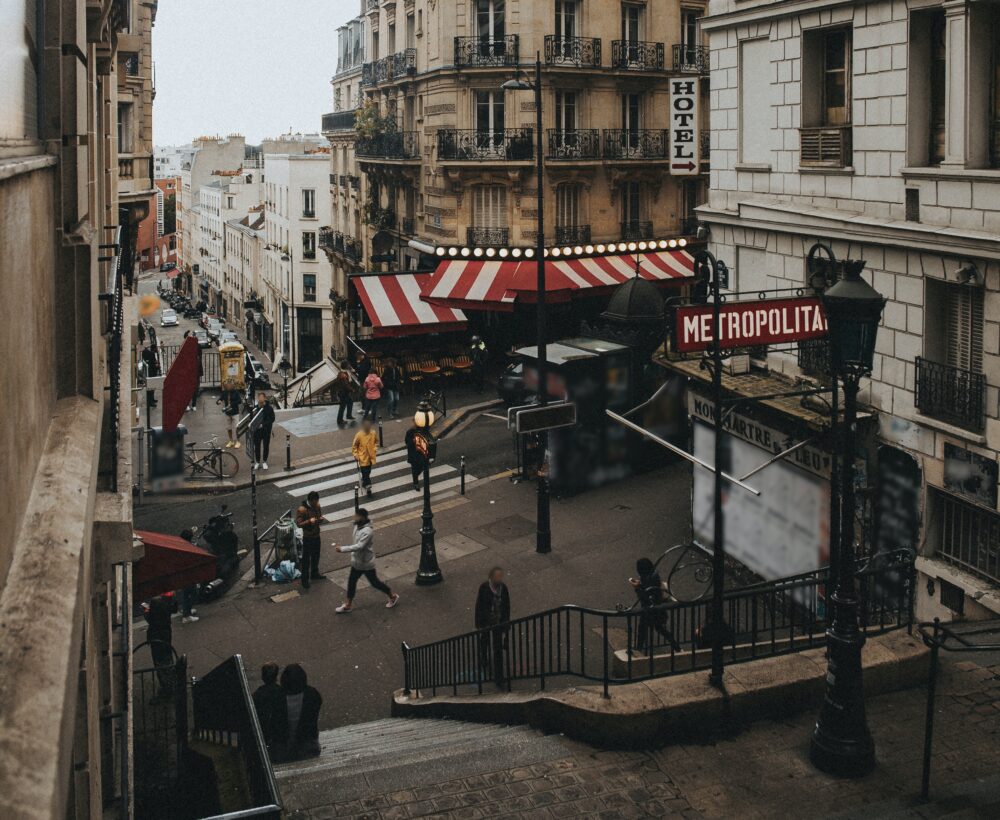
Lamarck – Caulaincourt Metro Station (photo by Max Avans via Pexels)
Lamarck, a small, characterful neighbourhood in northern Montmartre, doesn’t receive much attention in Paris city guides. Most likely this is because it sits in the shadow of its more famous 18th arrondissement neighbours: Montmartre proper — with its iconic Sacré-Cœur, Place du Tertre and cobblestone streets — and Abbesses, famous for the ‘Wall of Love’ (Le mur des je t’aime), heavily featured in Netflix’s love-to-hate-it Emily in Paris.
Lamarck may not boast such popular attractions, but there’s a certain understated coolness that resides in its artisanal shops, boutiques, cafes, and green spaces. The neighbourhood has certainly gentrified over the last ten years, becoming more bobo (disparaging French shorthand for ‘bourgeois-bohemian’) and cosmopolitan by the minute (Birkenstocks aplenty; oat milk on tap etc.), yet there’s still something quintessentially French about it. Rue Damrémont, the commercial darling of the neighbourhood, lined with poissonnières, fromageries, boulangeries, épiceries, boucheries and laveries, certainly feels so.
Tourists are a rare sight, unless they’ve gotten lost after visiting the Sacré-Cœur. Instead, you’ll encounter locals going about their daily lives — doing the school run, shopping for food, taking a café au lait. However, don’t mistake its family-friendly, residential vibe for dullness; there’s plenty of fun to be had in Lamarck.
Things to Do
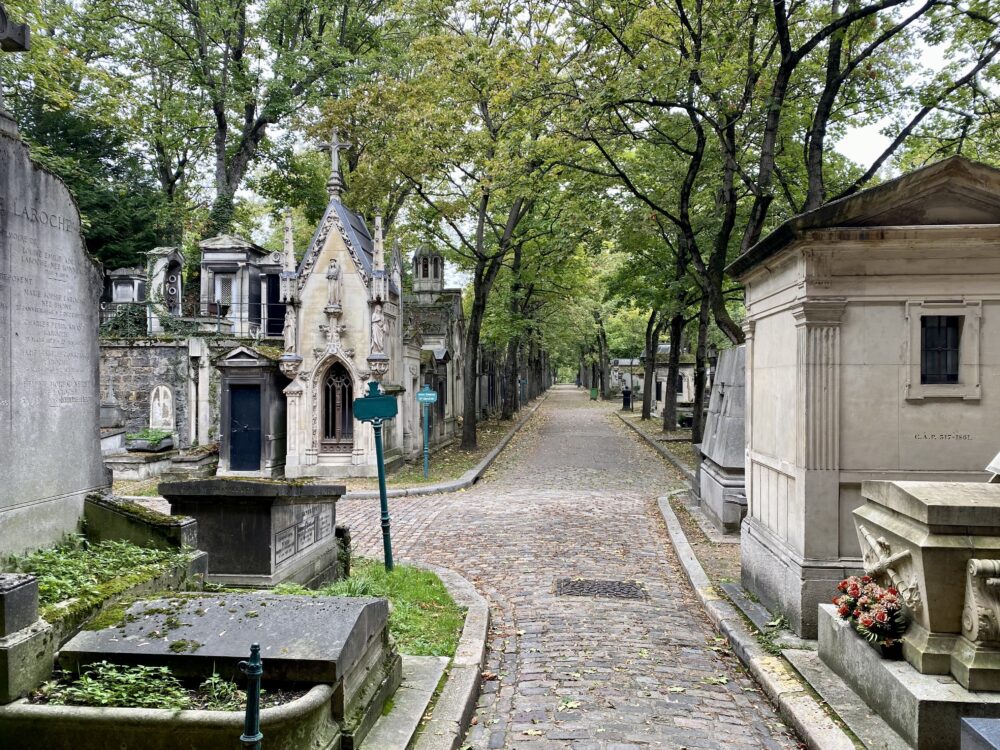
Montmartre Cemetery (Photo by Rachel Naismith)
While this neighbourhood may not appear on the map of ‘must visit’ Parisian landmarks, there are a handful of interesting spots worth exploring as you wander around. The first is Lamarck-Caulaincourt metro station (rue Lamarck, 75018), a subject for several artists and photographers over the years. It’s also famous for an appearance in the cult French film Amélie, where Audrey Tautou’s character is seen helping an elderly blind man navigate his way to the station. While locals pay little heed to the metro’s exterior on their daily route to work, it is most striking — the intricate metal work around the green and red metro sign, the unusual tunnelled entrance to the station, snug between two staircases stretching up towards Montmartre. At the top of steep rue Lamarck, these stairs are an ideal spot to take a breath, as the sun sets, and you can catch glimpses of the rest of the city. A word to the wise, however — the station’s interior isn’t quite so romantic.
Square Léon Serpollet (25 Rue des Cloys / 156 rue Marcadet, 75018) is named after the French engineer famed for his work on steam boilers and steam automobiles, whose workshop once stood nearby. It’s also home to a plaque honouring the hundreds of Jewish children from the 18th arrondissement who were sent to concentration camps and denied access to squares and green spaces in the early 1940s.
The entrance isn’t particularly welcoming (especially the one on rue Marcadet, with its austere metal gates) but inside it is leafy and peaceful, a welcome contrast to the busy urban surroundings. ‘Square’ is misleading – the space is made up of different levels and features picnic spots, children’s playgrounds, chessboards, a ping-pong area, table football, a basketball court, and even an outdoor gym. Locals love spending their weekends here and enjoying an alfresco lunch.
Another outdoor area of interest is Montmartre Cemetery (20 Avenue Rachel, 75018). Opened in 1825, it ranks as the city’s third-largest cemetery (after Montparnasse and Père-Lachaise) and is the final resting place for many famous writers, artists, scientists, and musicians, including French singer, Dalida, and the writer, Émile Zola.
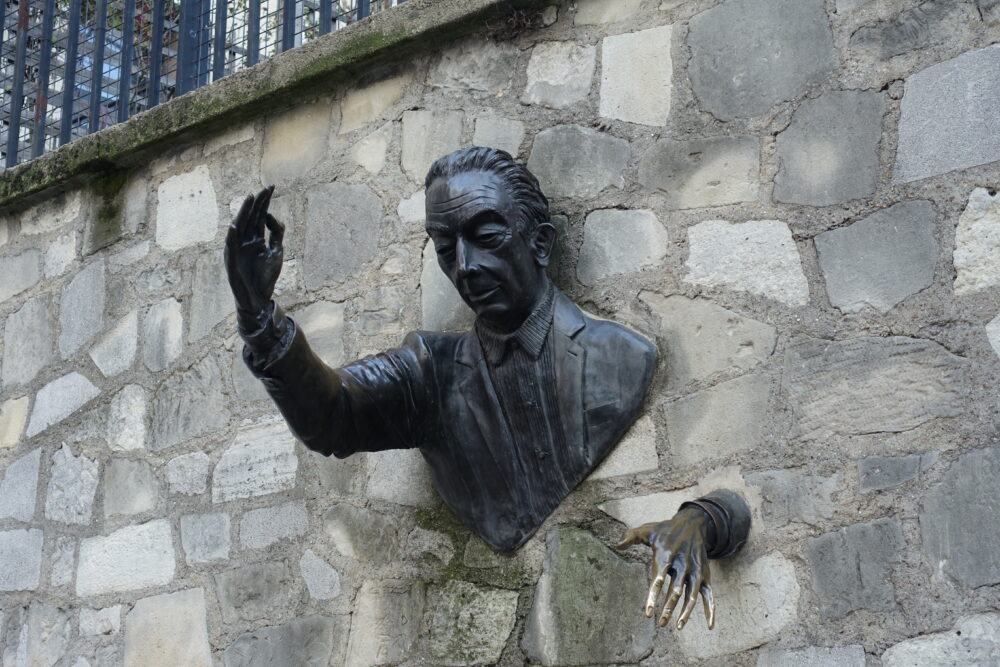
Le Passe-Muraille (Photo by Guilhem Vellut via Flickr / CC BY 2.0)
The centre of Montmartre is where you’ll find most street art and galleries, but Lamarck has its creative side too. The ‘Passe-Muraille’ (‘the walker through walls’), (place Marcel Aymé, 75018) is a playful nod to a French short story penned by Marcel Aymé. A good one for kids, the bronze sculpture depicts the tale’s rather dramatic finale, where the protagonist (who had the extraordinary ability to pass through walls), loses said powers and gets stuck. For more art, explore Galerie AVM (42 rue Caulaincourt, 75018) and Galerie la Clairière (93 rue Lamarck, 75018), two boutique galleries featuring exhibitions primarily from local painters, photographers, and sculptors. Finally, pay a brief visit to Vincent Van Gogh’s old apartment (54 rue Lepic, 75018), where he resided with his brother, Theo, in the late 1880s. You can’t get inside but, even from the street, the views of the tops of the city’s Haussmann apartments that inspired several of Van Gogh’s works (such as his oil painting ‘View from Theo’s Apartment’ or pencil and charcoal drawing ‘View From the Apartment in the Rue Lepic’) are worthy of a detour.
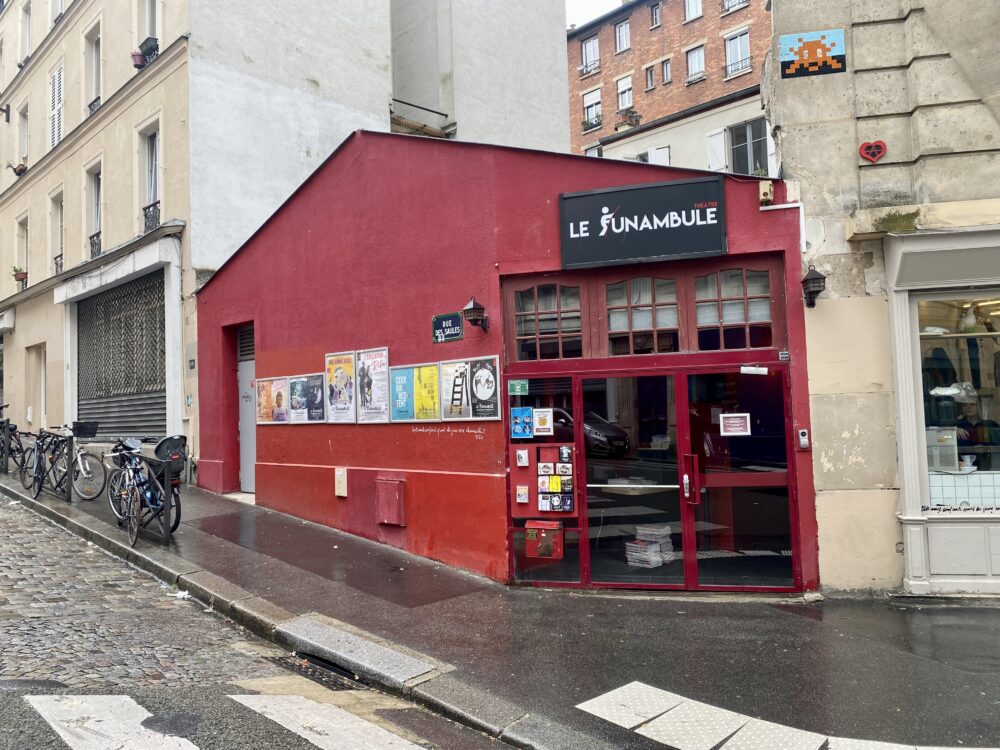
Le Funambule (Photo by Rachel Naismith)
Le Funambule (53 rue des Saules) is the neighbourhood’s theatre. Teeny tiny, it’s been going for around thirty years and showcases a huge variety of plays and performances. While the majority are in French (a notable exception being their rendition of ‘Spamalot,’ the musical comedy adapted from the Monty Python film), it’s rather jolly being part of the local drama scene, or peeking inside as you pass by (the staff won’t mind). The shows tailored towards young children are always so visually captivating that it doesn’t really matter if they’re in another language.
Shopping
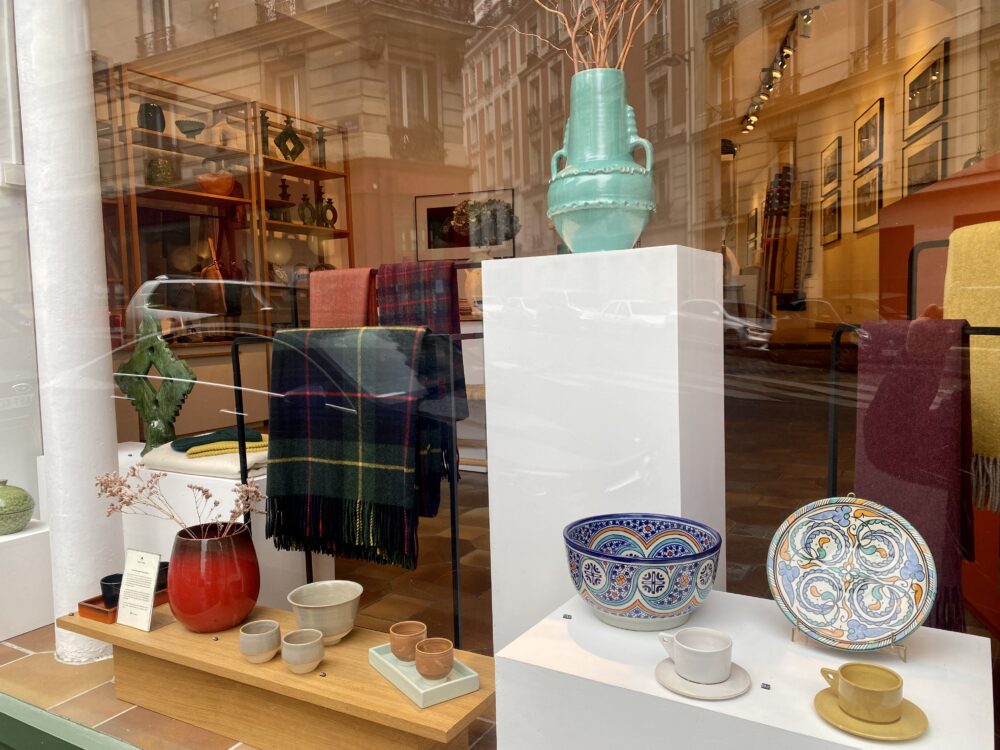
Mestiers (Photo by Rachel Naismith)
Rue Damrémont is Lamarck’s liveliest street. Do as the locals do and meander up and down it, stopping to explore some of its most interesting shops.
Chez Will (55) is a brocante (antiques store) filled with all sorts of oddities and vintage knick-knacks that gives the impression it’s been around for centuries, despite only opening its doors in the 90s. It’s run by an English-speaking German woman who’s always open to a bit of haggling and a chat. The high-end vintage and second-hand clothing pieces offered by Le Vestiaire du 18ème (18) are presented meticulously, colour coded and pristine, and while neighbouring C’est Extra (18) also sells second-hand clothing items, it’s their bizarre (but always fun) collection of local artists’ crafts —not least the tapestries covered in audacious slogans – that are worth a stop by.
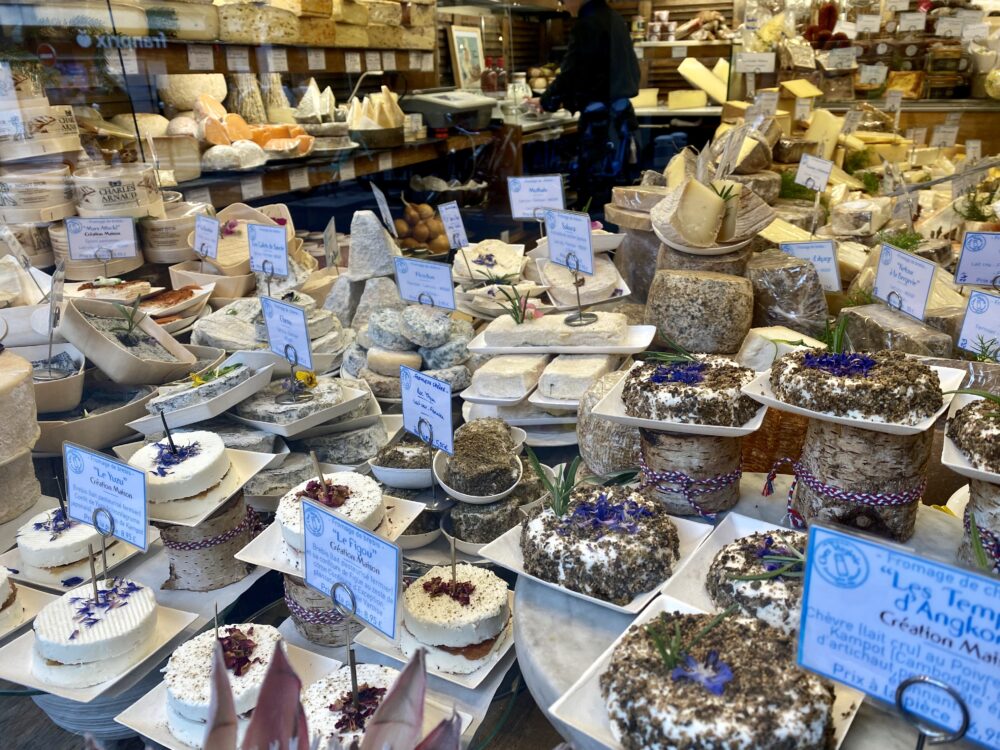
Fromagerie Chez Virginie (Photo by Rachel Naismith)
The arresting window display at fromagerie Chez Virginie (54) changes weekly, comprising a mountain of seasonal, and regional, cheeses — some even studded with dried flowers, or jewel-like fruits. For those travelling, the shop offers a vacuum-packing service (the staff are even happy to advise on which cheeses are better suited to train or air travel). Arnaud Larher (57), awarded the prestigious Meilleur Ouvrier de France (MOF) award for patisserie and chocolate in 2007, is probably best known for his chocolates and macarons, but you’re unlikely to find anything like his guimauves (marshmallows), soft and fruity, elsewhere. The toasty caramel smell wafting down the road will lead you to Le Brûlerie de Montmartre (66), a coffee roaster and shop offering an extensive selection of coffees, teas, jams, and honey.
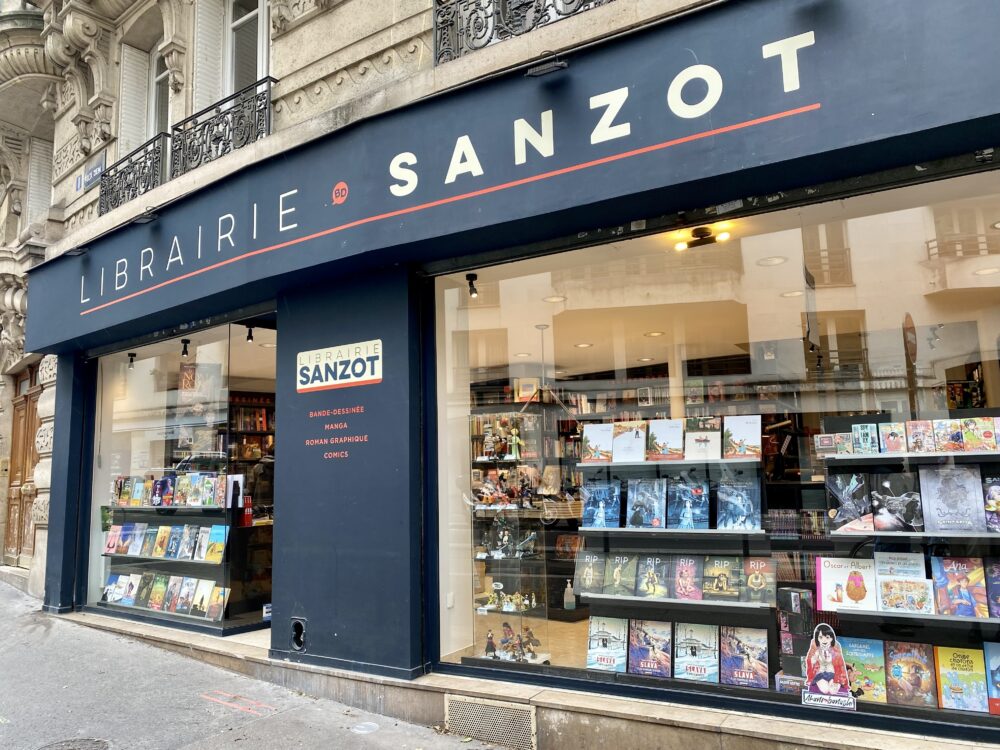
Librairie Sanzot (Photo by Rachel Naismith)
A short distance from Rue Damrémont, Librairie Sanzot (1 rue Félix Ziem) lined with hundreds of comic books of every iteration is a joy for all ages, but for something more grown-up, clothing shop Icône (110 rue Lamarck) presents a smart Nordic-inspired collection for both women and men. Equally smart and very much reflective of the area’s boho status is Mestiers (9 rue Francœur) which sells tasteful, hand-crafted home furnishings, highlighting the work of local designers and artists.
Where to Eat and Drink
Lamarck stands out in Paris for its high concentration of genuinely great restaurants, cafés, and bars that don’t rely on tourist trade.

Croissant from Boulangerie Gana (photo by Rachel Naismith)
To start the day, both Maison Arnaud Delmontel (57 rue Damrémont) and Boulangerie Gana (159 rue Ordener) offer a grand selection of viennoiserie (Delmontel for pain au chocolat, Gana for croissants!). You’ll also find excellent pastries at Atelier P1 (157 rue Marcadet), alongside cinnamon rolls, savoury and sweet tartelettes, and sourdough loaves. The coffee here is better than most, and as it’s located opposite Square Léon Serpollet (156 rue Marcadet, 75018), you can enjoy your petit déjeuner in the park. Alternatively, head to Two Door Coffee-Shop (27 rue Francœur), for a perfect flat white, a white chocolate and miso cookie, and plenty of gorgeous people posing in the window. If you’re in the mood for heartier morning fare, P1 Bouche (151bis rue Marcadet), sister to Atelier P1, has an unpretentious brunch menu that covers most basics (eggs, yoghurt, pastries, fruit), while Bruit Qui Court (69ter rue Damrémont) offers a more structured brunch experience with various set-menu options. They also serve delicious traditional raclettes.
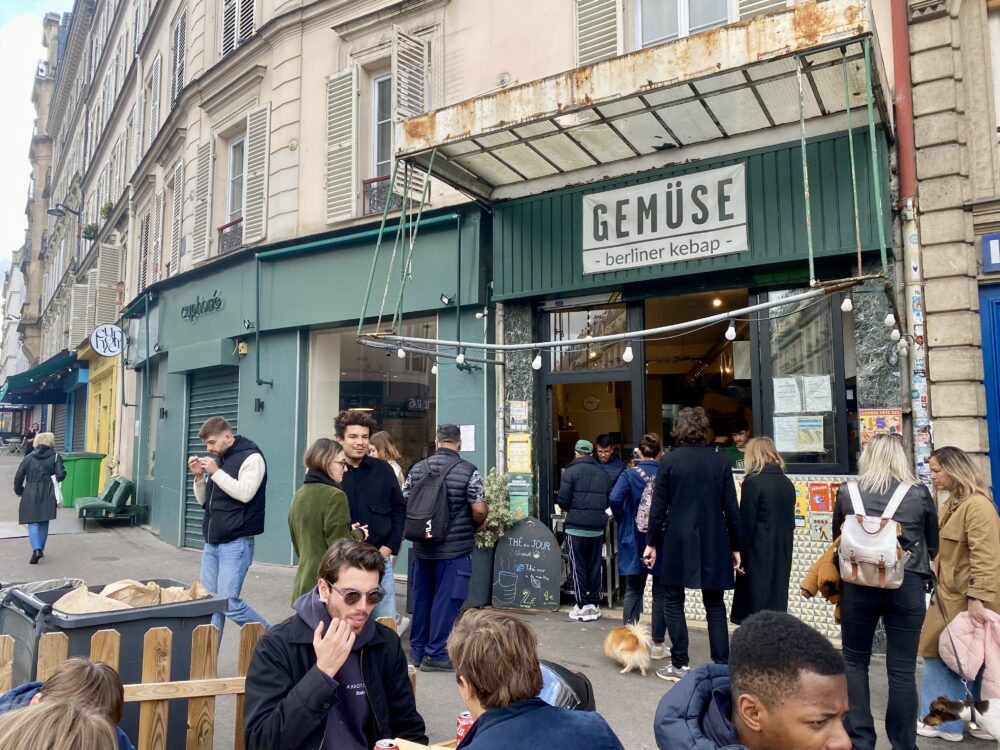
Gemüse at lunchtime (photo by Rachel Naismith)
On-the-go lunches are best purchased from Épi Epicerie (164 rue Marcadet), a small shop and kitchen that’s home to a well-curated selection of natural wines, cheeses, olive oils and fresh veg. They offer two warm lunch dishes (one meat, one veggie) and two baguette sandwiches made in-house with seasonal ingredients. Gemüse (61 rue Ramey) is another excellent takeaway choice for gourmet kebabs. Locals seem to agree and there’s almost always a jostling queue at lunchtime. For something lighter Birdie Num Num (91 rue Lamarck) does salad bowls that don’t compromise on flavour or texture, and just up the road, Mémé Viet (68 rue Lamarck) provides tasty Vietnamese cuisine and a good value for money lunch deal (they don’t stint on the Phở!). If time allows, a long lunch is always a good idea at Le Café de La Poste (76 rue Damrémont), a classic neighbourhood café with plenty of character, specialising in Auvergne cooking. Order from their menu du jour, where all the dishes are entirely homemade.
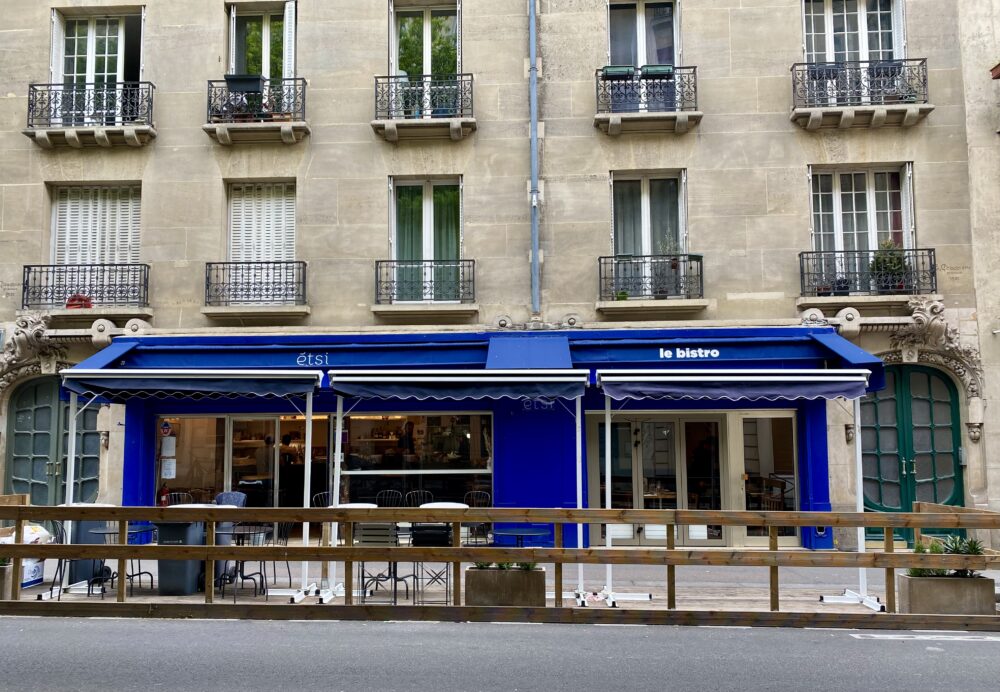
Étsi – Le Bistro (photo by Rachel Naismith)
Lamarck doesn’t switch off at night; evening is when the neighbourhood’s restaurants and bars really come alive, and there’s lively chatter around its streets.
A.lea (39 rue Lamarck) is a go-to for upscale dining. Their formula of contemporary French dishes topped with micro herbs might appear a little hackneyed, but the food genuinely stands out with its delicate and interesting flavours and prices aren’t as exorbitant as you might expect. Montcalm (21 rue Montcalm) offers a similar experience, serving sophisticated seasonal dishes in a more ‘hipster’ setting.
Le Maquis (53 rue des Cloys) catches the eye with its vibrant red façade, a cheerful contrast to the unassuming buildings that surround it. There are no airs and graces – inside is small, with space for around twenty covers, and the menu is delightfully chaotic with a mishmash of Italian classics (such as cacio e pepe) and French staples (oeuf mimosa; beef tartare). It all works, though, thanks to the use of top-notch ingredients treated with care. L’Esquisse (151 bis rue Marcadet) has a similarly unassuming charm, with its small menu and cosy wooden interior. The plates here are a little more modern, with foams and the like occasionally making an appearance, and the cooking is thoughtful, especially with respect to the vegetarian dishes and desserts.
More great vegetarian options can be found at Étsi – le bistro (23 rue Eugène Carrière), which offers polished Greek sharing plates, along with cocktails and high-end Greek wines. It’s always busy, but if they’re full, the team will likely seat you at the bar and treat you to a shot of Tsipouro while you wait for a table. More fun can be had at Chez Rita et Claudio (70 rue du Mont-Cenis) a place that oozes kitsch Italian charm. The food is rustic and good value for money. Stick to the pasta dishes which are simple and light.
For drinks, La Cave Café (134 rue Marcadet) is a laid back local haunt featuring weekly live music and stand-up comedy gigs in the basement, while for something slightly more sophisticated, Sapajou (10 rue de la Font du But) and Comestibles Et Marchand de Vins (65 rue du Mont-Cenis) are old-school wine bars with cracking charcuterie boards. Pantobaguette (6 rue Eugène Sue) is a lively and artsy restaurant/ bar equipped with a DJ booth and an eclectic wine collection and, for cocktails, Hiru (14 rue Duc, 75018) is a must for their espresso martini alone.
Where to Stay
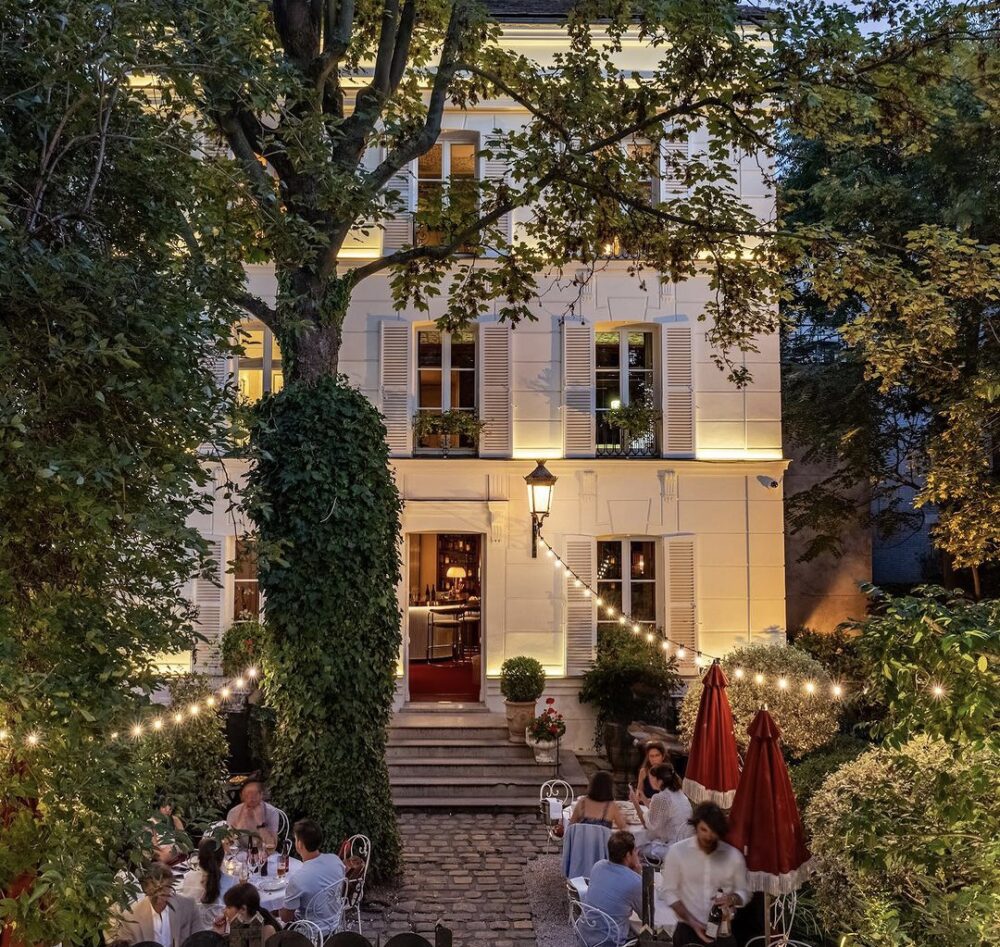
Hôtel Particulier Montmartre (Photo by @hotelparticuliermontmartre)
If money is no object, the splendid Hôtel Particulier Montmartre (23 Avenue Junot) is the most exclusive place to stay in Lamarck (if not Paris). It features an elegant cocktail bar, a picturesque courtyard and gardens, and offers only five luxurious suites. Conveniently located just a ten-minute walk from Montmartre centre and close to the Lamarck-Caulaincourt metro station, it promises top-notch service for a significant price tag. If an overnight stay is out of reach, swing by for a drink at the bar.
The four star Holiday Inn, Montmartre (23 rue Damrémont) is another well-placed option in Lamarck, also close to the metro station. The rooms are on the smaller size (even by Paris standards), but they’re comfortable, clean and practical and there’s free Wi-Fi throughout. The hotel often has last-minute availability at reasonable prices.
Those on a budget will appreciate Beau M Hostel (108 rue Damrémont), a fair-priced and contemporary hostel with attentive (English-speaking) staff and plenty of natural light. With private bathrooms, air conditioning, plenty of natural light and a chic coffee shop, it’s a cut above most hostels in the city.